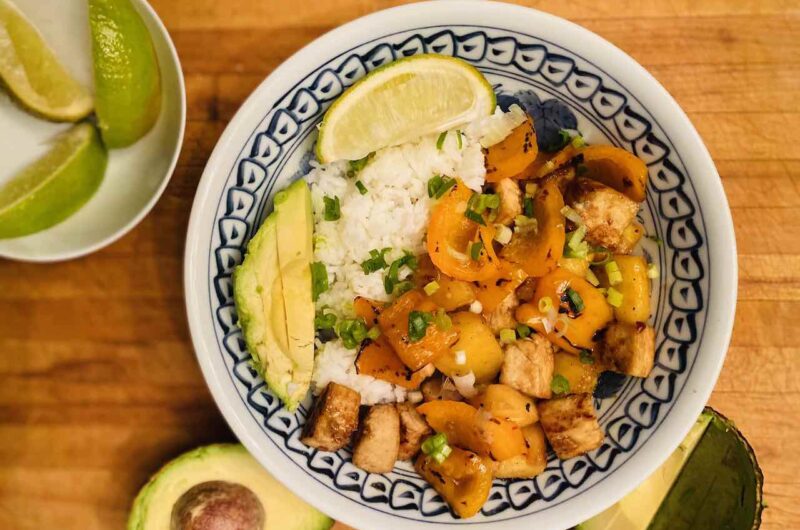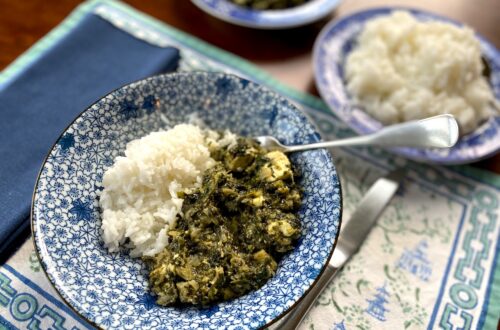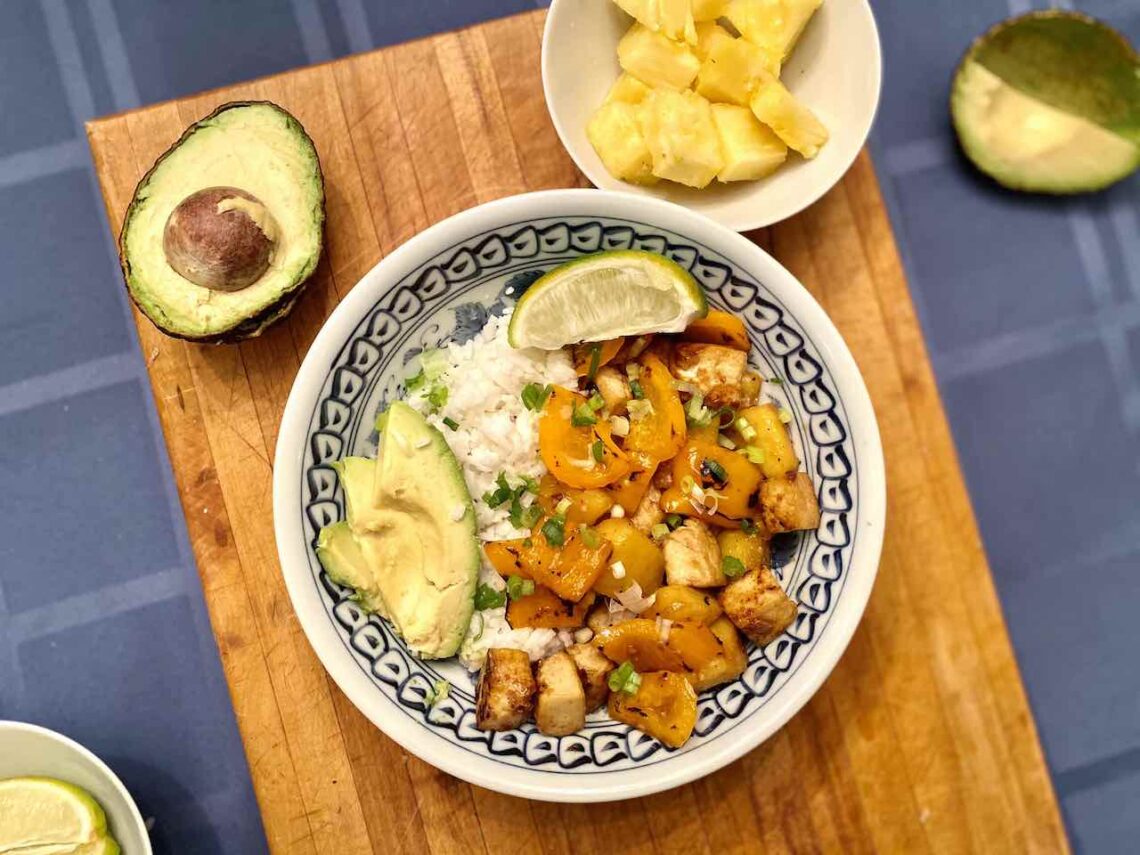
Sweet and Sour Tofu and Pineapple
One evening a couple of years ago, I trudged through the snowy and muddy New England streets and arrived at my friend’s house for dinner, where she welcomed me with a dish that tasted like summer. The day had felt interminable, but then this wonderful friend was there with love, laughter, and a delicious dinner. As someone who at the time lived mainly on meatballs, Bolognese sauce, and a lot of eggs (fried, soft-boiled, scrambled, in ramen, on top of tortillas, on top of more tortillas), this fresh tofu dish was the best gift I could have asked for.
As the days get darker and colder and social distancing continues unabated, we all need a way to pretend that it’s summer, even if just for a few minutes. That’s what this dish does. It combines crispy tofu with pineapple and a sweet and sour sauce that is both cozy and reminiscent of warmer times of year. This dish has recently become a staple in my family and has convinced certain people to eat – and even enjoy – tofu.
But oh no — pineapples. Pineapples have a lot of the same problems as bananas: short-term contracts for workers, low wages, union busting, the use of dangerous pesticides, and environmental harm. This should be unsurprising, as pineapples are often grown on former banana plantations and many of the same companies are major player in both industries. (Dole, Chiquita, Fyffes, and Del Monte are big players in both the banana and pineapple industries. In fact, Del Monte and its subsidiaries produce over 50 percent of the pineapples in Costa Rica.)
Costa Rica is undeniably the largest exporter of pineapples, exporting over 40 percent of all pineapples sold on the global market, for a value of $981 million in 2019. But working conditions on pineapple plantations are pretty bad. About 70 percent of the workers on Costa Rican pineapple plantations are migrants from Nicaragua. They are often hired by middlemen with only oral contracts and are often given short-term contracts, for about three months. Union busting is prevalent and workers generally earn poverty wages.
In addition to the low wages and precarious employment, pesticide use is rampant on these plantations. According to Oxfam Germany, certain pesticides, such as Bromacil and Paraquat, are used on pineapple plantations in Costa Rica – even though they are both prohibited in the EU. Workers report numerous reactions to the pesticides being sprayed on the pineapples: allergic skin reactions, vomiting, dizziness, and fainting. Additionally, in some regions, the pesticides appear to have seeped into the drinking water. While water tankers bring in water every other day, there is not enough for families’ basic needs, such as bathing and washing.
As many as 40 percent of pineapple plantations in Costa Rica are certified by Rainforest Alliance, a certifier of agricultural goods that aims to “make responsible business the new normal.” To be certified, a plantation must abide by certain rules about labor rights, environmental harm, and pesticide use. Yet, according to an article in The Guardian, Rainforest Alliance “is facing allegations of labour exploitation, use of illegal agrochemicals and the concealment of hundreds of undocumented workers at some of the pineapple plantations it certifies in Costa Rica.”
In one instance, a former manager admitted he had helped to hide over 800 undocumented workers from auditors when they arrived – of the 1000 workers on the plantation. The Guardian also reported that companies chose who auditors could interview. Those who were interviewed understood that they had to lie about working conditions or risk losing their jobs. Another worker at a Rainforest Alliance-certified farm told a reporter that he is not allowed to speak with auditors, since he is a member of a union.
Rainforest Alliance slaps its sticker onto pineapples from these plantations, and companies charge higher prices for them in stores across the US and Canada and in Europe. Yet in the pineapple industry, as in so many other industries (like cocoa), certification has little meaning or credibility. This is unsurprising, if you understand how certifiers are paid – namely, by the plantations. The plantations hire the certifier, who certifies the very company it is being paid by. The incentive structure inherent in this process – plus too few and shoddy audits, as well as ineffective interviews – means that certified plantations may have the exact same labor and environmental abuses as non-certified plantations. This has certainly been found to be the case in the tea and cocoa industries.
So what should you buy? Well, there’s no real answer here. But start by understanding how companies greenwash products so that you can avoid perpetuating the cycle. Unfortunately, sometimes it’s really difficult to sift through products to learn how they are produced. Like bananas, pineapples seem to be one of those industries.
If you’d like to learn more about the Costa Rican pineapple industry, read this article. To learn more about pineapples and bananas in the German market, check out Oxfam Germany’s report on pineapples and bananas.
Sweet and Sour Tofu and Pineapple
Course: Dinner, Recipe, Uncategorized4
servings45
minutesAdapted from Budget Bytes Mango Coconut Tofu Bowls
Ingredients
1/3 cup lime juice (from about 2 limes)
2 tablespoons honey
1 tablespoon soy sauce
1/8 teaspoon of red pepper flakes (or ¼ teaspoon if you like spicy food)
1 clove garlic, minced
1 teaspoon corn starch, plus 2 tablespoons to coat the tofu
2 tablespoons peanut oil
Extra firm tofu, cut into 1/2-inch pieces
1 orange, yellow, or red pepper, cut into 1-inch pieces
3 cups pineapple, cut into 1-inch chunks
2-3 green onions, sliced
½ cup of fresh cilantro
1-2 avocados
Directions
- Press out the liquid from the tofu. I do this by unwrapping the tofu and placing it on a plate. I then place a second plate on top of the tofu and a cast iron pan on top of the plate. I let it sit for about 30 minutes, emptying the plate of liquid once or twice.
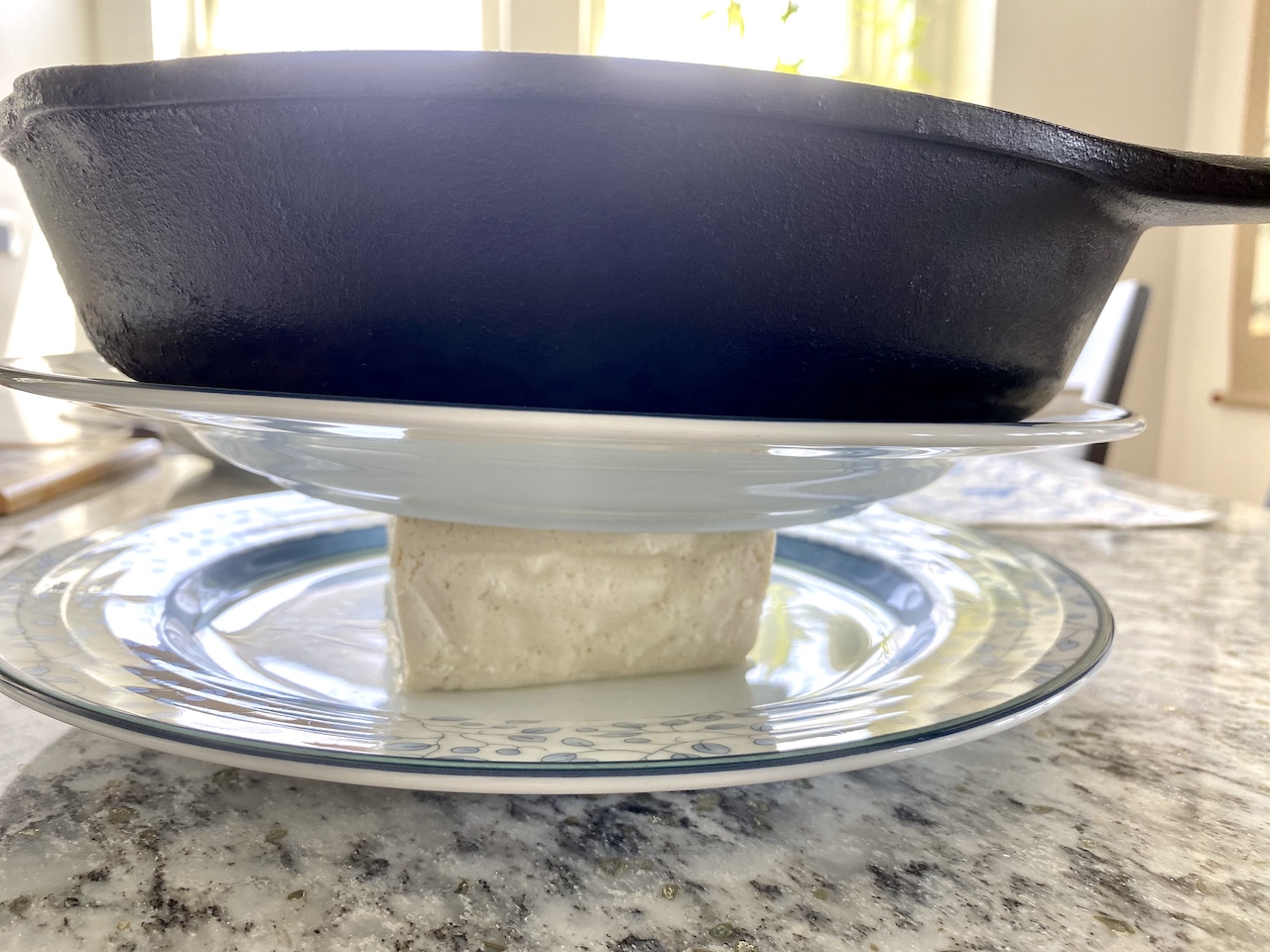
- Combine the lime juice, honey, soy sauce, red pepper flakes, garlic, and 1 teaspoon of corn starch in a small bowl. Mix together and set aside.

- Cut the tofu into ½-inch cubes. Sprinkle with 2 tablespoons of corn starch and mix until all the pieces are well coated.
- Heat a large skillet or wok over high heat. Add the peanut oil, waiting until it is heated (it should shimmer). Add the tofu and fry for about 3 minutes on each side. The tofu should be golden brown on all sides. When cooked, remove from the skillet and set aside.

- Add the pepper to the skillet and cook on medium heat for 2-3 minutes, until the pieces are beginning to blister. Remove from the pan when done and set aside.
- Next, add the pineapple to the skillet and cook on high heat until it starts to brown on the outside. After 3-4 minutes, remove the pineapple from the skillet and set aside.

- Turn the heat down to low and add the sauce. Let the sauce cook, stirring regularly, until it is simmering. When it begins to simmer, it will start to thicken. Let it thicken for a couple of minutes until it has become syrupy.

- With the heat on low, add the cooked tofu, pepper, and pineapple into the sauce and stir to coat everything in the sauce. Serve over rice, with avocado, green onions, and cilantro on top.
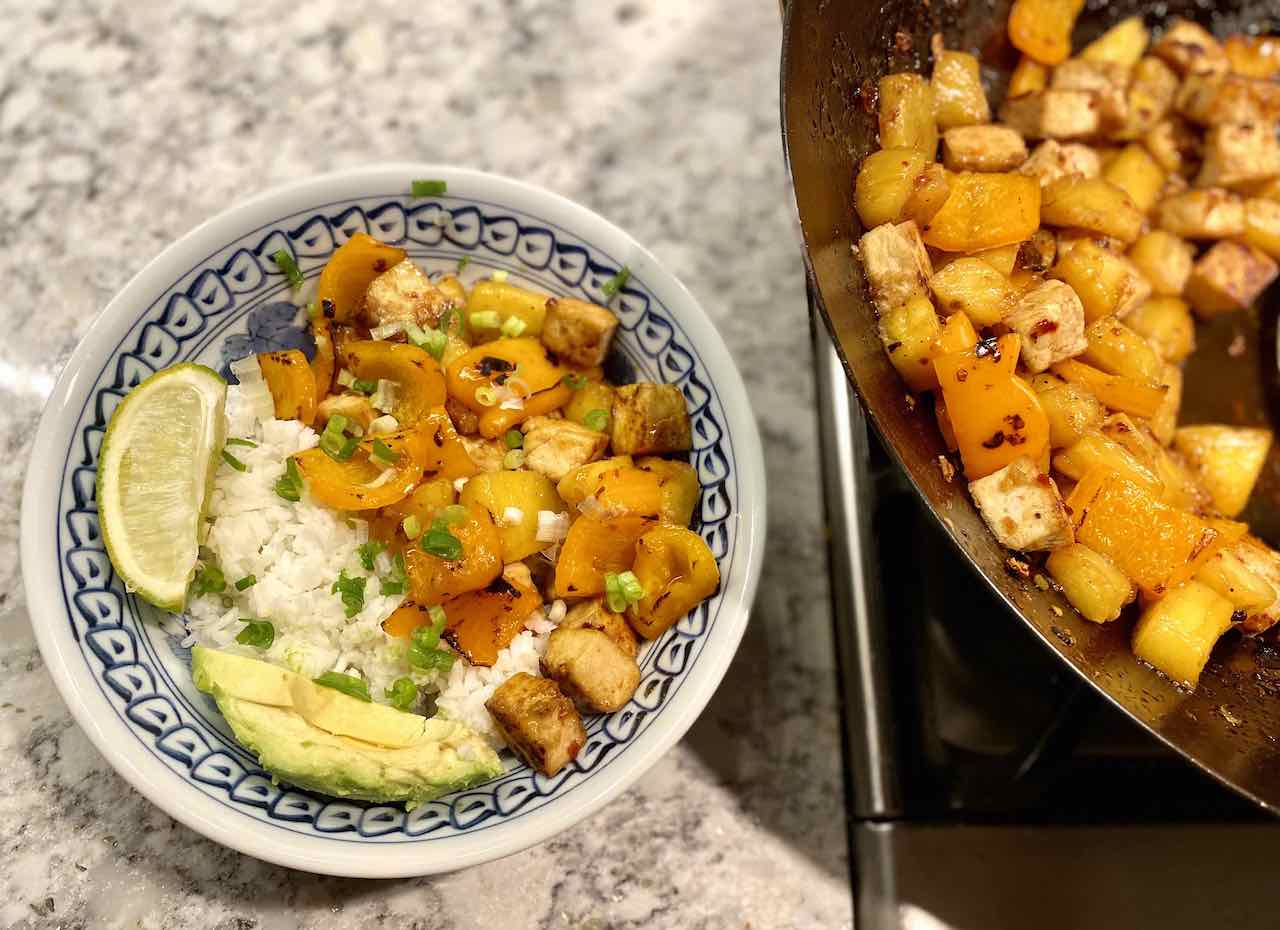
Notes
- You can adjust the amount of lime juice and honey to reach your desired balance of sweet and sour. This recipe is a bit more sour, but if you like it sweeter just decrease the amount of lime juice a little and add another tablespoon of honey.
- If you don’t like pineapple, you can follow the recipe this is adapted from and use mango instead.

